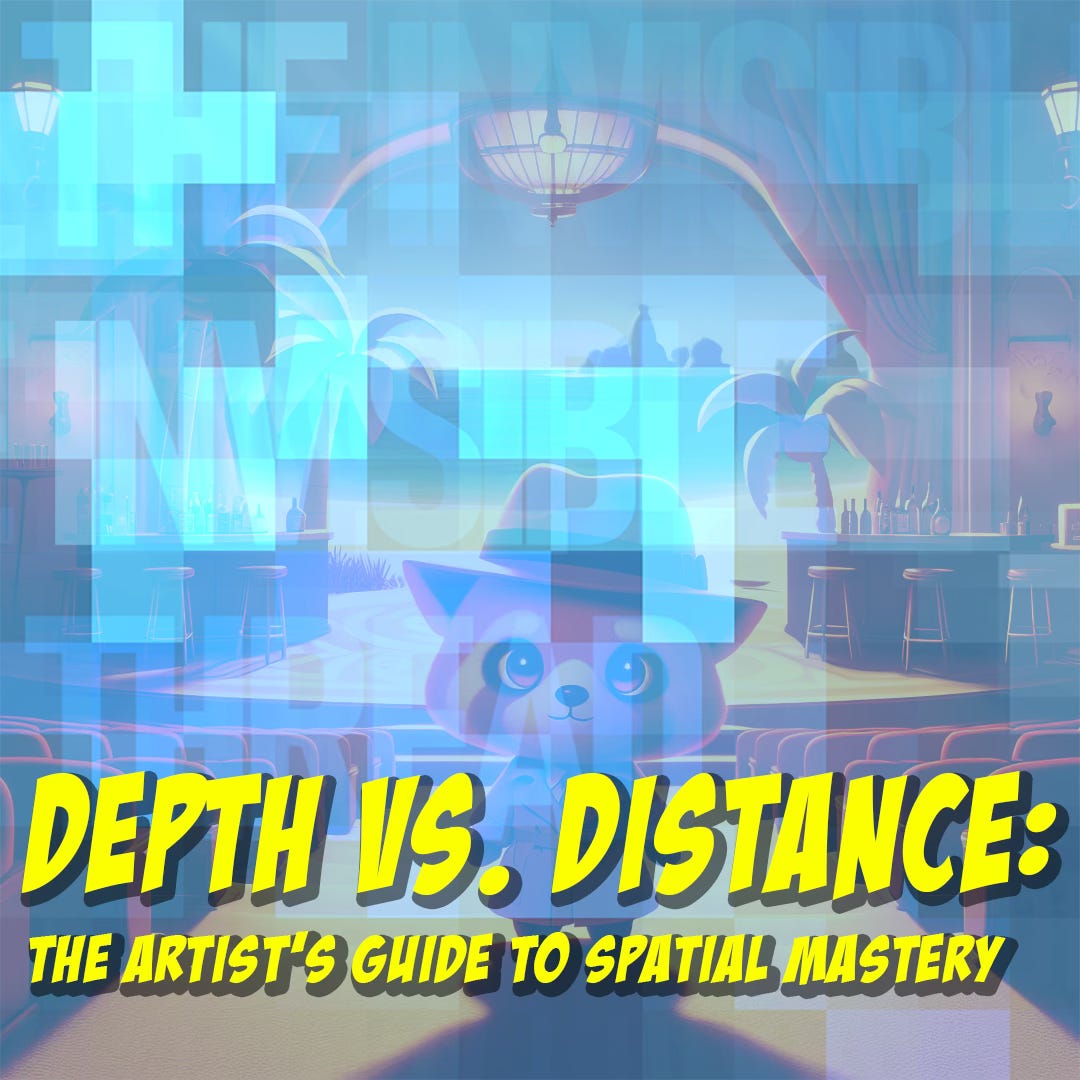Depth vs. Distance: The Artist's Guide to Spatial Mastery
Unlock the secrets of transforming flat canvases into captivating, three-dimensional masterpieces with our insider exploration of depth and distance. They sound like the same thing, but they're not.
My insider explanation on the difference between depth and distance.
Capturing the illusion of three dimensions on a two-dimensional surface in an act of magic and imagination. This article clarifies the distinction between depth and distance. Tailored for artists, designers, and visual creators at any stage of their journey, it sheds light on the subtle yet profound distinctions between perceiving depth (the spatial relationships between objects) and distance (how far away those objects are from the viewer). Understanding these concepts is not just about enhancing technical skills; it's about elevating your art to communicate more effectively with your viewer, evoke deeper emotions, and create more immersive experiences. For artists looking to push the boundaries of realism or add more dynamism to their work, grasping these principles can transform how you approach your canvas and your decisions once the graphite or paint starts flying.
Perception of Depth
Depth perception refers to our ability to see the world in three dimensions and judge the spatial relationships between objects—how far apart they are from each other and ourselves. It involves understanding the relative positions of objects in space, whether something is in front of or behind another object, and the layering of elements within a scene.
Fundamental Mechanisms: Depth perception is primarily facilitated through binocular cues like stereopsis, where the brain combines the different images seen by each eye to understand depth. Monocular cues, such as occlusion (where one object partially blocks another from view), relative size (larger objects are perceived as closer), and linear Perspective (parallel lines appear to converge with distance), also play critical roles.
Artistic Application: In art, depth is suggested through techniques that mimic these cues, such as repeating elements, overlapping forms, varying texture and detail to imply foreground and background, and using shading to give objects a three-dimensional appearance.
Perception of Distance
Distance perception, on the other hand, is our ability to estimate how far away an object is from us. It's a more specific aspect of spatial perception, focusing on gauging objects' absolute or relative distance from the observer.
Fundamental Mechanisms: This perception relies heavily on both binocular cues, like convergence (the degree to which the eyes turn inward to focus on an object), and monocular cues, including the known size of objects (using known sizes to judge distance), motion parallax (objects closer move faster across our field of vision than those farther away when we move), and atmospheric Perspective (objects appear fuzzier and more bluish with distance due to atmospheric interference).
Artistic Application: Artists can manipulate distance perception by adjusting the clarity, color saturation, and size of objects in their compositions. For example, reducing detail and contrast for distant elements can enhance the sense of distance.
Distinctions and Interplay
While depth perception involves the arrangement and spatial relationship of objects in a scene, distance perception focuses on estimating how far those objects are from the viewer. Both perceptions are crucial for navigating and understanding our environment, and in the context of art, they are fundamental for creating visually engaging and lifelike scenes.
Depth and Distance in Art: An artist who can skillfully manipulate depth and distance cues can create a more believable illusion of space. For instance, a painting might use sharp, detailed figures in the foreground and less detailed, faded figures in the background to enhance the depth (through layering and detail variation) and the sense of distance (through atmospheric Perspective and scaling).
While depth and distance perceptions are closely linked, they cater to different aspects of our spatial understanding. For artists, mastering the depiction of both can dramatically improve their work's realism and emotional impact, allowing viewers to feel truly immersed in the created scenes. It's not a REQUIREMENT for creating a strong sense of dimensionality on paper or canvas. However, being aware of the distinction between depth and distance means you can articulate them and more deliberately represent space within your art.
If this helped, we're gonna dive into the deep end of Perspective in my March Workshop at the Art Students League of New York. Join us; it'll be a blast.
https://workshops.artstudentsleague.org/course/Houghton-WS-Perspective_cd_6506_6352
Charles Merritt Houghton
16 February 2024





